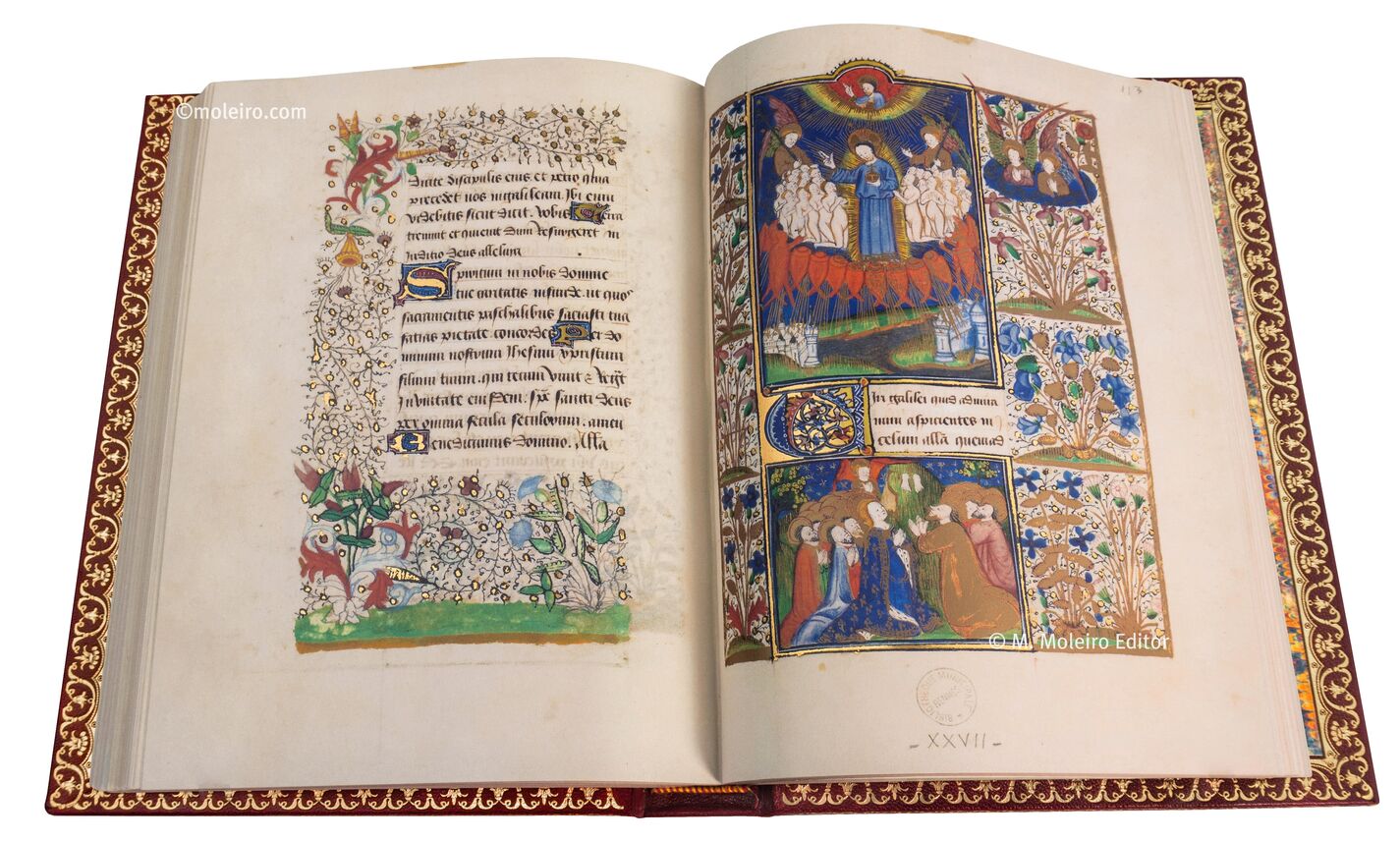
Viri galilaei quid admiramini aspicientes in caelum, etc. (Acts 1:11: 'Ye men of Galilee, why stand you looking up to heaven?' And then, following, 'This Jesus who is taken from you into heaven, shall so come as you have seen him going into heaven').
The page, read from top to bottom, is formed of three distinct stages celebrating the Ascension of Christ: right at the top we have his ultimate destination, with a numerous escort of those saved, all kneeling and naked, and of seraphim, all accompanying the Resurrected Christ to heaven. Just below, in the same compartment, is the earth which the blessed have left, with its towns and rivers. And finally, in the compartment at the bottom, is the crowd who witness his ascension, with the trace of his two feet leaving the earth.
The figure of God the Father presides over the folio's upper compartment. Above a radiant sky he is seen against a background of the heads of barely visible red seraphim. On this occasion he is shown as the God the Father but with the appearance of Christ, specifically, with the head of Christ himself, in accordance with Christ's own affirmation, reported in John 14:8-9, when the Apostle Philip had asked, 'Lord, shew us the Father', to which Christ himself answered, 'He that seeth me seeth the Father also'.
In the history of art Christ is most often shown alone during the ascension, his rise to heaven, or accompanied by a few angels. Here, however, he is shown rising above Jerusalem, symbolised by two areas of houses and towers separated by a river, and he is accompanied by a crowd of completely naked men and women, symbolising the souls of the just, kneeling towards him with their hands clasped. In addition, below them are two large cross-bearing angels dressed as monks and above them a garland of ten seraphim. And in the midst of all this is Christ, mounting towards heaven with the globe of the world held in his hand, the attribute which tells of his sovereignty over all the universe. With his right hand he bestows a solemn blessing, undoubtedly on all those saved kneeling souls around him (with, it seems, more women than men), but also, first and foremost on the apostles and disciples (the majority of whom, this time, are bearded men). They are also kneeling, but still at ground-level, behind or at the side of Mary. The imprint of Jesus' feet, a mediaeval iconographic convention indicating his 'take-off' towards the sky, remains on the ground. Although in the Acts of the Apostles (1:9) there is mention of a cloud receiving Christ out of their sight, the miniaturist has dispensed with this detail in order to suggest that the faithful followed his ascension, at least in their thoughts, which explains the convincing manner in which they direct their eyes.